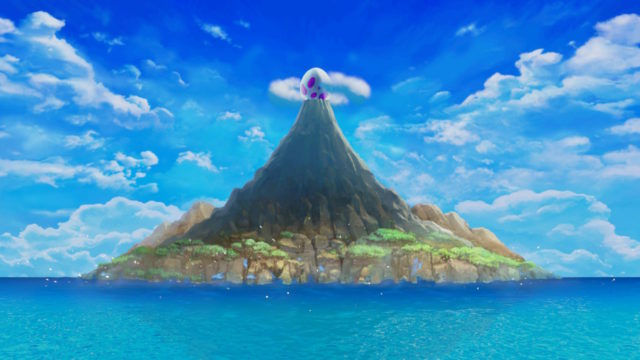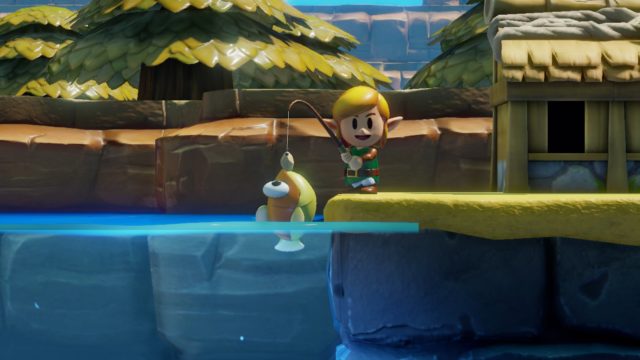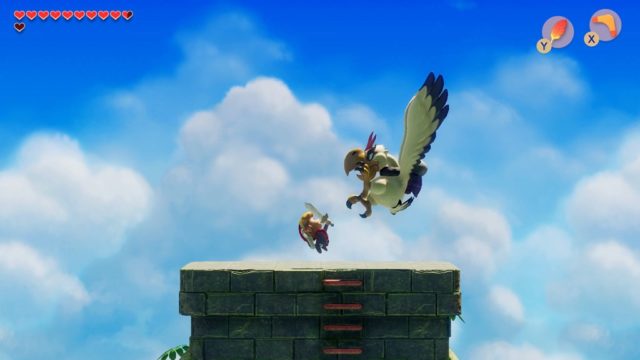Toy aesthetic is a perfect fit; combat is more engaging than the Game Boy original; soundtrack captures the feel of the original while adding more nuance and complexity
Performance dips regularly, but doesn't impede gameplay; Chamber Dungeons are mostly superfluous
The Legend of Zelda: Link’s Awakening on Nintendo Switch is a perfect example of how less can be more in video game remakes. The original version that launched in 1993 was a technological marvel. Somehow, Nintendo managed to compress a large overworld stuffed with dungeons, enemies, characters, and secrets onto a diminutive Game Boy cartridge and not only make it all work, but sing. My first traditional Zelda experience was playing Link’s Awakening— it was such a stirring adventure that I legitimately rank it above A Link to the Past as one of the all-time great games ever made.
In my mind, for Link’s Awakening to be a successful remake, it would require as much delicacy as the remakes of Ocarina of Time and Majora’s Mask on 3DS. Luckily, Nintendo turned to the same studio, Grezzo, which handled those two revamps. Ocarina of Time 3D and Majora’s Mask 3D worked so well because Grezzo only made small tweaks to both games. Those changes were centered on quality of life improvements relating to the games’ UI, making it easier to manage items and equipment in both. The core gameplay, however, was generally unchanged outside of some (thankfully) optional tweaks like gyro controls for aiming.
Ultimately, beyond making everything prettier with new and improved graphics, Grezzo and Nintendo understood that Ocarina of Time and Majora’s Mask are timeless experiences. What worked in 1998 and 2000, respectively, would work today— and that holds true for Link’s Awakening, too. As groundbreaking as Breath of the Wild was, its reinvention of the Zelda formula was never a necessary “fix” because nothing was broken in the first place. The loop of exploring the overworld and finding new dungeons to pilfer is sound, particularly in Link’s Awakening. Thus, Nintendo opted to give fans largely the same game that hit Game Boy 26 years ago. The decision to remake Link’s Awakening with minimal and calculated changes has yielded spectacular results.
Link’s Awakening looks like a toy box come to life. Everything has a plastic sheen and every environment seems as though its components were placed with tweezers, like the miniature trees and buildings that run alongside toy railroad tracks. Where The Wind Waker gifted the world with Toon Link, Link’s Awakening on Switch has brought fans Toy Link. Yet, while there’s an undeniable whimsy to these maquettes, they’re also strikingly vibrant and bold. Water shimmers realistically in the light, foliage sways in the wind, and enemies and allies alike appear practically alive. It’s one of the most beautiful games I’ve ever had the pleasure of playing… with one small caveat.
Sadly, there are times when the system can’t keep up with what’s happening on-screen in Link’s Awakening and the framerate dips. It’s something I noticed in June during E3 when I previewed the title and I had hoped it would be sorted out by launch. Alas, it was not, but I am being sincere when I say that it’s such a slight problem that it genuinely doesn’t impact gameplay. The only area in which the dip becomes truly problematic is in Gopongo Swamp, where there’s so much action happening simultaneously that the game really starts to chug. Beyond that, however, gameplay in Link’s Awakening is immaculate. The performance drop is more a brief flutter than anything else and shouldn’t scare anyone away from playing.
Like Grezzo’s two previous Zelda remakes, Link’s Awakening primarily sticks to the exact blueprint of the original. Other than adding more Heart Containers and Secret Seashells, nothing has been changed in terms of plot and game progression. Which is fine because the flow here is perfect. Everything from the narrative to items is meted out at exactly the right pace. However, while the core game is basically unchanged, that hasn’t stopped Grezzo from including a number of quality of life improvements to the controls and inventory system. Many items that needed to be equipped are now persistently accessible, for instance, which cuts away from time spent swapping over to the pause menu.
Combat has also seen some small but welcome alterations. While Link’s Awakening is still centered around hack-and-slash combat, there’s a new parry move that has been incorporated. Some enemies that brandish shields along with swords must be blocked before Link can move in for the finishing blow. It’s a tiny change, but one that makes fights tenser than anything the original Game Boy version had on offer. There are other minute tweaks that serve to add some complexity to otherwise very straightforward segments of gameplay; the crane in the Trendy Game is now harder to manipulate, for instance, making one of the earlier segments of the trading sequence more challenging than before.
It was sad to see the photographer and the various snapshots that could be gathered abandoned for this version of Link’s Awakening, but they’ve at least been replaced with Dampé and the new Chamber Dungeons. Chamber Dungeons take a cue from the Super Mario Maker series, allowing players to arrange a series of pre-made dungeon tiles (or Chambers) into their own, custom labyrinths. It’s a fun aside, but feels largely superficial compared to the robust, intricate levels of detail and control that fans have when designing stages in Super Mario Maker. Dampé offers a number of challenges to players that revolve around designing Chamber Dungeons, which are enjoyable for what they are, but not especially memorable.
Grezzo has officially completed a trifecta of nearly perfect recreations. The heart of Link’s Awakening is here, but more accessible than ever. Combat has greater complexity, the graphics are stunning, and the new arrangement of the classic soundtrack sounds spectacular. It’s unfortunate that performance can lag at times, but it’s so unobtrusive that it doesn’t weigh the game down. Whether you’re someone who played Link’s Awakening before or someone who never has, this is one of the best entries in the series and should be played by all. Don’t sleep on this one.




 ShareThis
ShareThis








